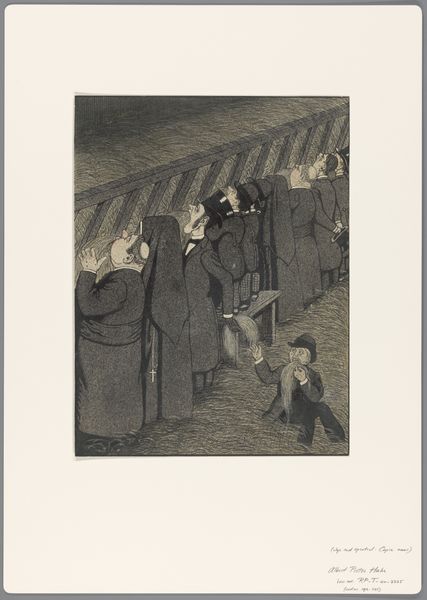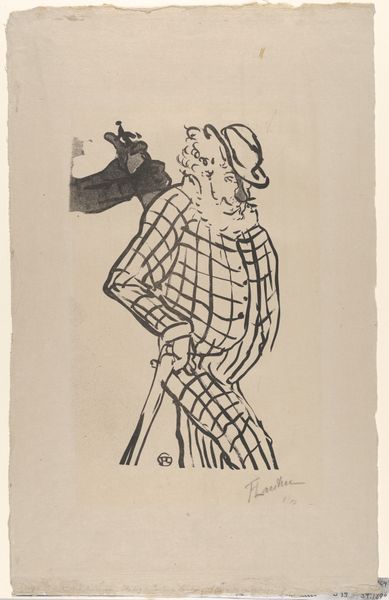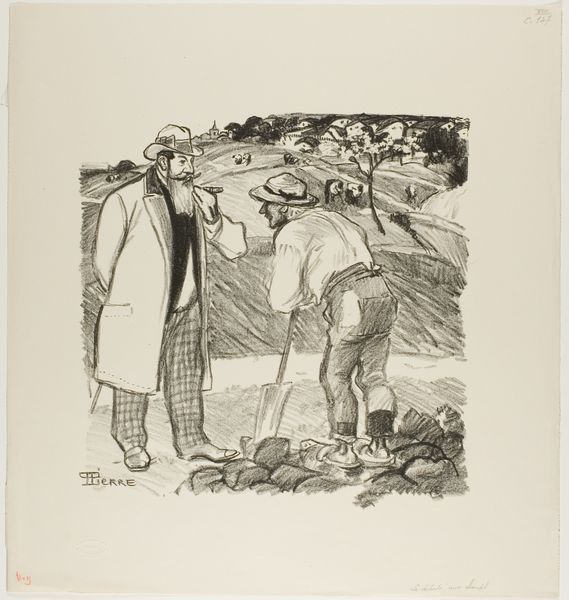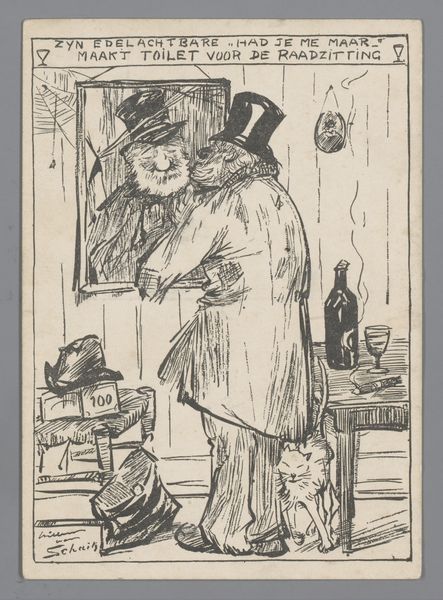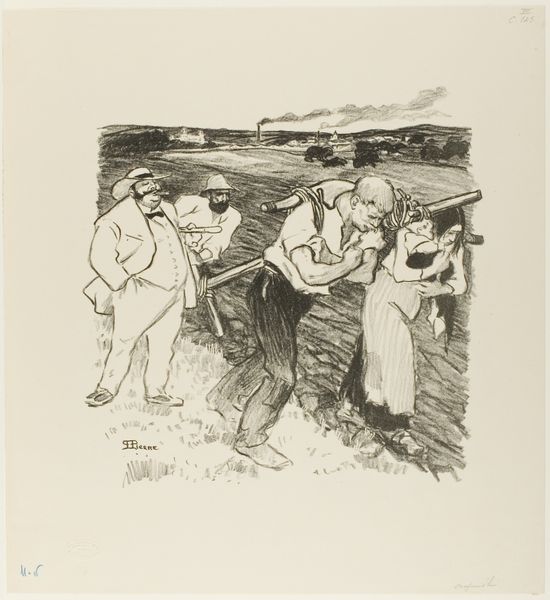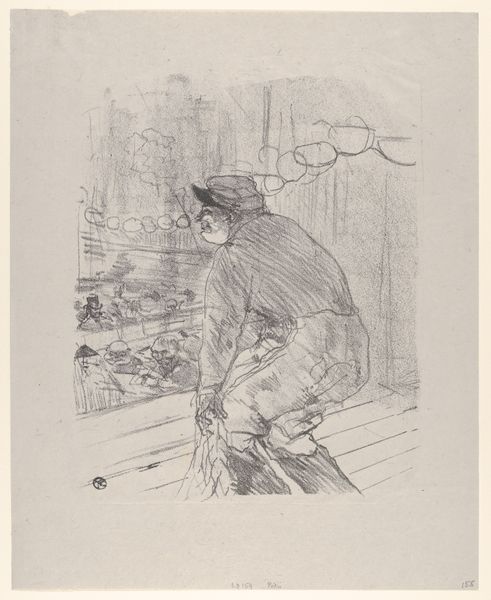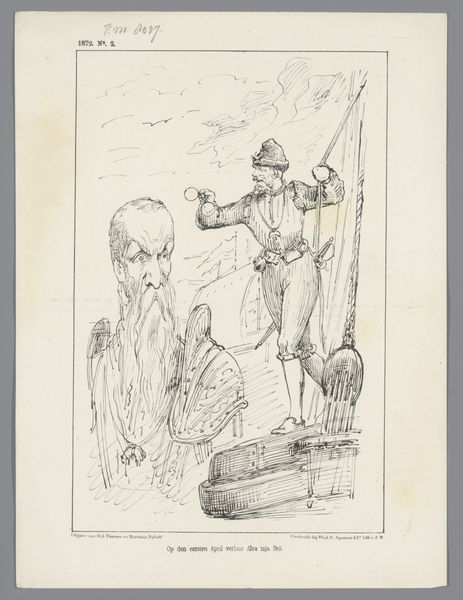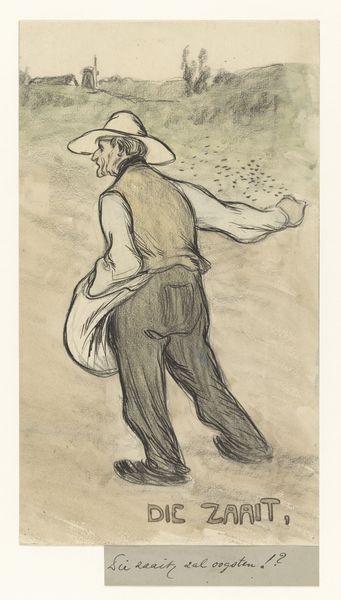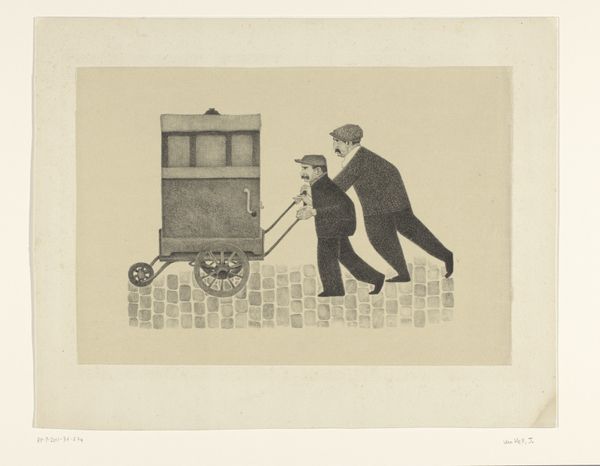
drawing, ink
#
portrait
#
drawing
#
cartoon like
#
caricature
#
ink
#
symbolism
#
watercolour illustration
#
cartoon style
#
cartoon carciture
Dimensions: height 356 mm, width 272 mm
Copyright: Rijks Museum: Open Domain
Editor: Here we have Albert Hahn's "Ontwerp voor een politieke spotprent op de Drankwet," created between 1904 and 1905 using ink and watercolor. It strikes me as a darkly humorous critique, with exaggerated figures and a clear power dynamic. What layers of meaning do you see within this cartoon? Curator: It's key to understand the socio-political climate of the time. Hahn, through his work, was deeply embedded in the burgeoning socialist movement in the Netherlands. This piece, judging from the title, seems to engage directly with debates surrounding alcohol legislation – likely targeting the ways in which such laws might disproportionately impact the working class. Note how the smaller figure, presumably representing the worker, is literally leashed. How does this visual metaphor resonate with your understanding of class struggle at the turn of the century? Editor: The leash certainly emphasizes a lack of agency, portraying the worker as controlled. Is the larger figure, then, meant to symbolize the government or perhaps the wealthy elite, dictating these restrictive alcohol policies? Curator: Precisely. Consider the grotesque caricature – the bloated belly, the judging gaze, the watch possibly indicating time theft, literally a measurement of control – are potent symbols of power and perhaps corruption. The setting with a dense mass of people adds another layer to it, an industrial one where control and regulations apply. Do you think this drawing promotes awareness? Editor: Yes, Hahn uses those elements to clearly convey the uneven distribution of power and spark awareness and perhaps action regarding unfair regulations. This lens is fascinating, I see much more in this political statement now. Curator: Indeed. By situating Hahn's caricature within the context of early 20th-century social movements, we can more deeply appreciate its activist message and its role in shaping public discourse on class, power, and social justice. Thank you, your insight opened new ways of reading this piece for me.
Comments
No comments
Be the first to comment and join the conversation on the ultimate creative platform.
